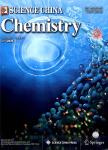Ion-vacancy coupled charge transfer model for ion transport in concentrated solutions
Ion-vacancy coupled charge transfer model for ion transport in concentrated solutions作者机构:Hubei Key Laboratory of Electrochemical Power Sources Key Laboratory of Analytical Chemistry for Biology and Medicine (Ministry of Education) Department of Chemistry Wuhan University Hunan Provincial Key Laboratory of Chemical Power Sources College of Chemistry and Chemical Engineering Central South University State Key Laboratory of Physical Chemistry of Solid Surfaces Department of Chemistry Xiamen University
出 版 物:《Science China Chemistry》 (中国科学(化学英文版))
年 卷 期:2019年第62卷第4期
页 面:515-520页
核心收录:
基 金:supported by the National Natural Science Foundation of China (21673163, 21832004, 21802170) financial support from Central South University (502045001, 20180020050002)
主 题:concentrated solutions ion dynamics ion volume effect chemical affinity ion-vacancy couple
摘 要:We present a conceptual framework for understanding and formulating ion transport in concentrated solutions, which pictures the ion transport as an ion-vacancy coupled charge transfer reaction. A key element in this picture is that the transport of an ion from an occupied to unoccupied site involves a transition state which exerts double volume exclusion. An ab initio random walk model is proposed to describe this process. Subsequent coarse-graining results in a continuum formula as a function of chemical potentials of the constituents, which are further derived from a lattice-gas model. The subtlety here is that what has been taken to be the chemical potential of the ion in the past is actually that of the ion-vacancy couple. By aid of this new concept, the driving force of ion transport is essentially the chemical affinity of the ion-vacancy coupled charge transfer reaction, which is a useful concept to unify transport and reaction, two fundamental processes in electrochemistry. This phenomenological model is parameterized for a specific material by the aid of first-principles calculations. Moreover, its extension to multiple-component systems is discussed.



